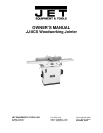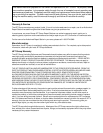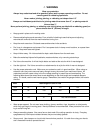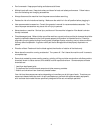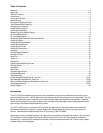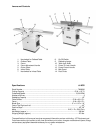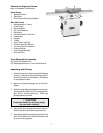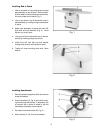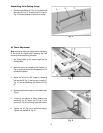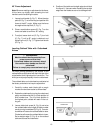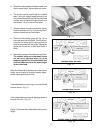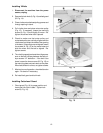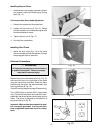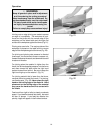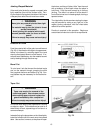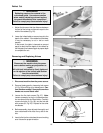
3
WARNING
Wear eye protection.
Always keep cutterhead and drive guards in place and in proper operating condition. Do not
remove guard for rabbeting operations.
Never make a jointing, planing, or rabbeting cut deeper than 1/8”
.
Always use hold-down/push blocks for jointing material narrower than 3”, or planing material
thinner than 3”.
Never perform jointing, planing, or rabbeting cuts (with jointers provided with a rabbeting guard) on
pieces shorter than 8” (203mm) in length.
• Keep guards in place and in working order.
• Remove adjusting keys and wrenches. Form a habit of checking to see that keys and adjusting
wrenches are removed from the machine before turning it on.
• Keep the work area clean. Cluttered areas and benches invite accidents.
• Don’t use in a dangerous environment. Don’t use power tools in damp or wet locations, or expose them
to rain. Keep work area well lighted.
• Keep children away. All visitors should be kept a safe distance from the work area.
• Make the workshop kidproof with padlocks, master switches, or by removing starter keys.
• Don’t force the machine. It will do the job better and safer at the rate for which it was designed.
• Use the right tool. Don’t force a machine or attachment to do a job for which it was not designed.
• Use the proper extension cord. Make sure your extension cord is in good condition. When using an
extension cord, be sure to use one heavy enough to carry the current your machine will draw. An
undersized cord will cause a drop in the line voltage resulting in power loss and overheating. The
following table shows the correct size to use depending on the cord length and nameplate ampere
rating. If in doubt, use the next heavier gauge. Remember, the smaller the gauge number, the heavier
the cord.
Volts Total Length of Cord in Feet
120V 25 50 100 150
240V 50 100 200 300
AWG
14 12 Not Recommended
• Wear proper apparel. Do not wear loose clothing, gloves, neckties, rings, bracelets, or other jewelry
which may get caught in moving parts. Nonslip footwear is recommended. Wear protective hair cover-
ing to contain long hair.
• Always use safety glasses. Also use a face or dust mask if the cutting operation is dusty. Everyday
eyeglasses only have impact resistant lenses; they are not safety glasses.
• Secure work. Use clamps or a vise to hold the work when practical. It’s safer than using your hands
and it frees both hands to operate the tool.



